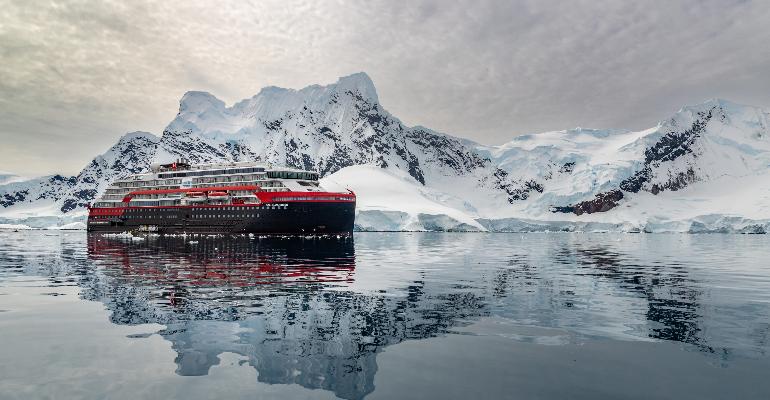Speaking at a Seatrade Maritime News webinar Debunking LEO and Cloud for the Maritime Industry experts from the communications and cloud fields discussed the new capabilities of LEO connections, the solutions they enable, and the real world experiences of a maritime LEO early adopter.
“For us, the most important thing is stability,” said Jon Grunnan, VP Group IT (CIO), Hurtigruten.
“I've personally challenged Speedcast to do the impossible, to as a target have less than five minutes downtime per 24 hours on all our ships every single day. That used to be impossible, then came Starlink, and overnight we saw that switch to zero minutes downtime, which is a new world for us,” said Grunnan.
Starlink is a low-latency broadband system from Elon Musk’s SpaceX which uses LEO satellites to deliver greater bandwidth at lower latency than GEO satellite services.
Hurtigruten Expeditions started using Starlink on its vessels in 2021 and has spent most of 2022 testing the service and began a slow rollout a couple of months ago.
Many of Hurtigruten Expedition’s routes in the far North and Antarctica are not best suited to geostationary (GEO) satellite connectivity, as GEO satellites orbit around the equator and have limited to no visibility closer to the poles. The company uses a mix of 4G, 5G, GEO and LEO connectivity on its vessels, using the most appropriate link where it is needed.
“The maritime industry has been accelerating to transition into digitalisation with the introduction of new digital technologies, in many, many realms,” said Sandro Delucia, Product Director, Speedcast.
“With this, there's been an explosion of data and with a myriad of sensors and other information, an explosion of personas and user stories that have come out of this, of course, the demand for faster decision making on real time data where available.”
The adoption of digital technologies was in the pursuit of operational enhancements, efficiencies, and profitability, said Delucia, from preventative maintenance to reefer status monitoring, fuel use optimisation to increasing crew and passenger welfare provision.
Paul DeLaria, Partner Solution Architect, Amazon Web Services (AWS), said: “A vessel really is very similar in technology to a floating data centre. It has all of these technology stacks inside of it that are needed to run the enterprise. Now, how do you as an industry shift to a cloud-first model?”
DeLaria said the move to cloud-first operations brings benefits by reducing the financial risk of experimenting with new services and approaches, at the same time enabling rapid innovation and iteration without the overhead of hardware investments.
Will Mudge, VP Engineering Operations at Speedcast said there are a range of LEO satellite providers out there, each with their own strengths and weaknesses. “When you start to talk about enabling your cloud journey, consider the things that are important to you - availability, latency, cost, the size of the antenna, vertically integrated like Starlink, or more distributed like Telesat. What's important to you?”
Mudge said the new connectivity offered by LEO enables bringing shoreside technologies to remote locations: “for something as simple as OpenTable. We've seen requests for running OpenTable on remote sites, so people can make reservations at onboard restaurants. But they didn't feel the ability to do that, because they didn't feel like they could trust the link.”
Grunnan said Hurtigruten’s experience with Starlink has led it to review in parallel both its current learnings and how best to make use of the new service, and to look ahead at the future implications for its business.
“Based on what we're learning here, what should our future services look like? Are we going to be a 100% coverage, well-performing internet all of the time type cruise? If so, what sort of services should we develop for our cruise ships? Can we really rely on cloud services?” asked Grunnan.
Operationally, Hurtigruten has been led to ask about its own data architecture, the size and scope of data centres onboard, and the way the company does operational services.
Grunnan said the project has been made possible by excellent co-operation between the ships, landside offices and Hurtigruten’s partner Speedcast.
“We have very good co-operation to make sure that things are delivered on time, are tested right, that we can combine the different services, and that we aggressively look for operational deviations and try to mitigate those when we see that there are outages or similar things,” said Grunnan.
Watch the full webinar on demand by following this link: Debunking LEO and Cloud for the Maritime Industry
Copyright © 2024. All rights reserved. Seatrade, a trading name of Informa Markets (UK) Limited.
Add Seatrade Maritime News to your Google News feed.  |

